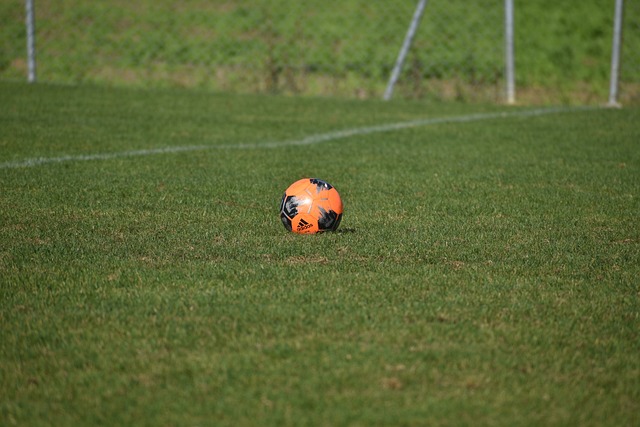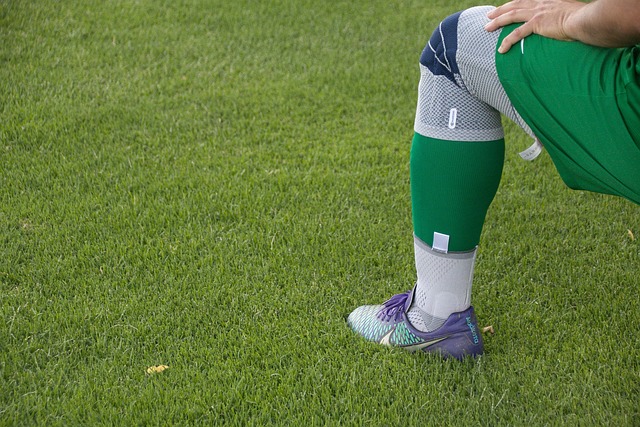The evolution of Ducks soccer uniforms mirrors the sport's transformation from a grassroots recreation to a global spectacle. Historically functional, with basic durable gear for comfort and protection during soccer training programs, designs shifted in the 1970s and 80s towards more stylish, sponsor-driven appearances. Modern uniforms blend tradition and technology, incorporating lightweight synthetics, breathable fabrics, and smart textiles that track player metrics like heart rate and fatigue. Uniform customization has also become popular, allowing players to express individuality within team settings and fostering a stronger sense of community, especially in youth leagues engaged in diverse soccer training programs.
Ducks soccer uniforms have undergone a remarkable evolution, reflecting not just changes in fashion but also technological advancements and an increased focus on team identity. This article takes you on a journey through time, exploring the historical transformation of these attire from basic to stylish. We delve into modern innovations that incorporate cutting-edge technology, enhancing performance in soccer training programs. Furthermore, we uncover how customization has become a powerful tool for fostering team spirit and individuality on the field.
- Historical Overview: From Basic to Stylish – A Journey Through Time
- Modern Innovations: Incorporating Technology and Performance Enhancers
- Customization and Team Identity: Unlocking Individuality in Soccer Uniforms
Historical Overview: From Basic to Stylish – A Journey Through Time

Over the years, the evolution of Ducks soccer uniforms mirrors the sport’s transformation from a basic recreation to a sophisticated art form. Historically, soccer attire was primarily focused on functionality—simple, durable garments designed for comfort and protection during intense training sessions and matches. The traditional uniform often consisted of a solid-colored jersey, matching shorts, and stockings, with minimal branding or detailing. This modest aesthetic was reflective of the early days of Ducks soccer clubs, where the emphasis was on participation and skill development through rigorous soccer training programs.
However, as the sport gained global popularity and professional leagues emerged, the uniforms evolved to incorporate more stylish elements. The 1970s and 80s saw an increase in colorful designs, with teams adopting unique patterns and bold colors, often featuring sponsors’ logos. This shift marked a departure from the uniform’s functional roots, as aesthetics started to play a significant role in team identity and marketing. Today, Ducks soccer uniforms are a blend of traditional and modern elements, offering both performance-enhancing technology and visually appealing designs that capture the dynamic nature of the game and cater to fans’ expectations.
Modern Innovations: Incorporating Technology and Performance Enhancers

In recent years, the evolution of Ducks soccer uniforms has been marked by a significant shift towards incorporating modern innovations driven by technology and performance enhancers. Advanced materials like lightweight synthetics and breathable fabrics have become staples, offering players improved comfort and agility during intense training sessions and matches. These materials not only enhance performance but also contribute to better heat regulation, ensuring athletes stay cool and dry for extended periods.
Furthermore, technological advancements in soccer training programs have influenced uniform design. Teams now benefit from smart textiles that track player metrics like heart rate, speed, and fatigue levels. This real-time data allows coaches to make informed decisions, tailor training regimens, and optimize player performance. As a result, Ducks soccer uniforms are becoming increasingly high-tech, reflecting the dynamic nature of modern sports equipment and training methods.
Customization and Team Identity: Unlocking Individuality in Soccer Uniforms

In the realm of soccer, where teamwork and unity are paramount, uniforms have long served as a symbol of collective identity. However, the evolution of duck soccer uniforms has seen a shift towards customization, allowing individual players to express their unique personalities and talents. This change is particularly notable among youth and amateur teams participating in diverse soccer training programs. By incorporating personalized touches, such as custom names, numbers, or even team-specific motifs, players feel a deeper connection to their attire, fostering a stronger sense of belonging.
The move towards individualized uniforms challenges the traditional notion of uniformed uniformity, instead promoting a vibrant tapestry where each player’s identity is highlighted. This not only boosts morale and confidence but also encourages a more inclusive environment, especially in multi-cultural teams. As soccer continues to grow globally, these customized uniforms serve as a powerful tool to unite players from different backgrounds, fostering a sense of community both on and off the field.






